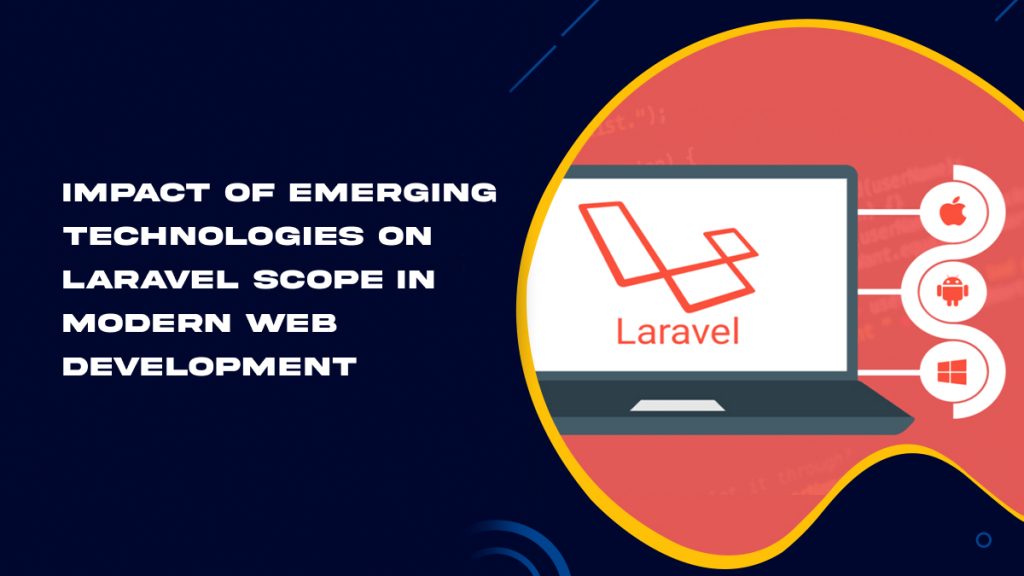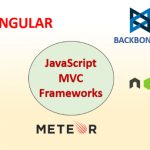Impact of Emerging Technologies on Laravel Scope in Modern Web Development
by admin
Posted on 07/27/23 10:39 AM

Laravel, a PHP web application framework, has been the go-to choice for developers worldwide due to its simplicity, elegance, and extensive set of features. Over the years, Laravel has established itself as a powerful tool for building robust web applications. However, as technology continually evolves, newer frameworks and technologies have emerged, altering the landscape of web development. In this article, we delve into the ways in which emerging technologies have impacted the scope of the once-dominant Laravel framework.
Microservices Architecture:
The advent of microservices architecture has transformed the way applications are built and scaled. Microservices promote the division of an application into smaller, loosely coupled services that communicate via APIs. While Laravel remains a strong contender for monolithic applications, it faces competition from frameworks better suited to the microservices approach. Developers now prefer lighter frameworks that excel at handling specific microservices tasks, rather than an all-encompassing framework like Laravel.
The Rise of JavaScript Frameworks:
JavaScript frameworks such as React, Angular, and Vue.js have gained immense popularity due to their ability to create dynamic and interactive user interfaces. As a result, developers often opt for building Single Page Applications (SPAs) using JavaScript frameworks alongside lightweight backend frameworks or headless CMS solutions. The need for server-rendered web pages, where Laravel traditionally thrives, has diminished in favor of SPA approaches.
API-Driven Development:
Modern web applications heavily rely on APIs to communicate and share data between the frontend and backend. With the rise of API-driven development, Laravel’s primary role has shifted to providing API endpoints rather than serving as a complete frontend-to-backend solution. Developers are more inclined to use Laravel as a backend API provider and pair it with JavaScript frameworks for the frontend.
Serverless Computing:
Serverless computing has revolutionized how applications are deployed and managed. With serverless platforms like AWS Lambda and Azure Functions, developers can build and run applications without managing servers. While Laravel can be utilized in serverless architectures, developers are increasingly exploring serverless-native frameworks that require less overhead and better align with serverless principles.
The GraphQL Surge:
GraphQL, a query language for APIs, has emerged as a powerful alternative to traditional REST APIs. It allows clients to request precisely the data they need, reducing over-fetching and under-fetching issues commonly encountered with REST APIs. As GraphQL gains popularity, developers have started to explore other frameworks that natively support it, as opposed to retrofitting Laravel for GraphQL support.
Containerization and Orchestration:
Containerization technologies like Docker and container orchestration tools like Kubernetes have revolutionized application deployment and scaling. These technologies ensure consistency across different environments, making development and deployment more efficient. While Laravel has embraced containerization with Docker support, other frameworks have integrated containerization and orchestration more seamlessly.
Conclusion:
Laravel has undoubtedly been a cornerstone of web development, and its popularity remains strong for various use cases. However, as newer technologies and trends emerge, the scope of Laravel’s applications has evolved. Developers now have a plethora of options, ranging from specialized microservices frameworks to JavaScript-based SPA solutions, and serverless-native alternatives. As the web development landscape continues to evolve, it is essential for developers to stay updated on emerging technologies and choose frameworks that best suit their project requirements and development preferences.
Categories
-

JavaScript Frameworks
02/27/24 12:46 PM
-

API First Development
02/22/24 6:19 AM
-

Mobile Commerce: The Future of Online Shopping
02/22/24 6:09 AM
-

What is ChatGPT? Exploring the Latest Trends
02/22/24 5:57 AM
-

The Power of AI in App Development
02/5/24 7:44 AM
